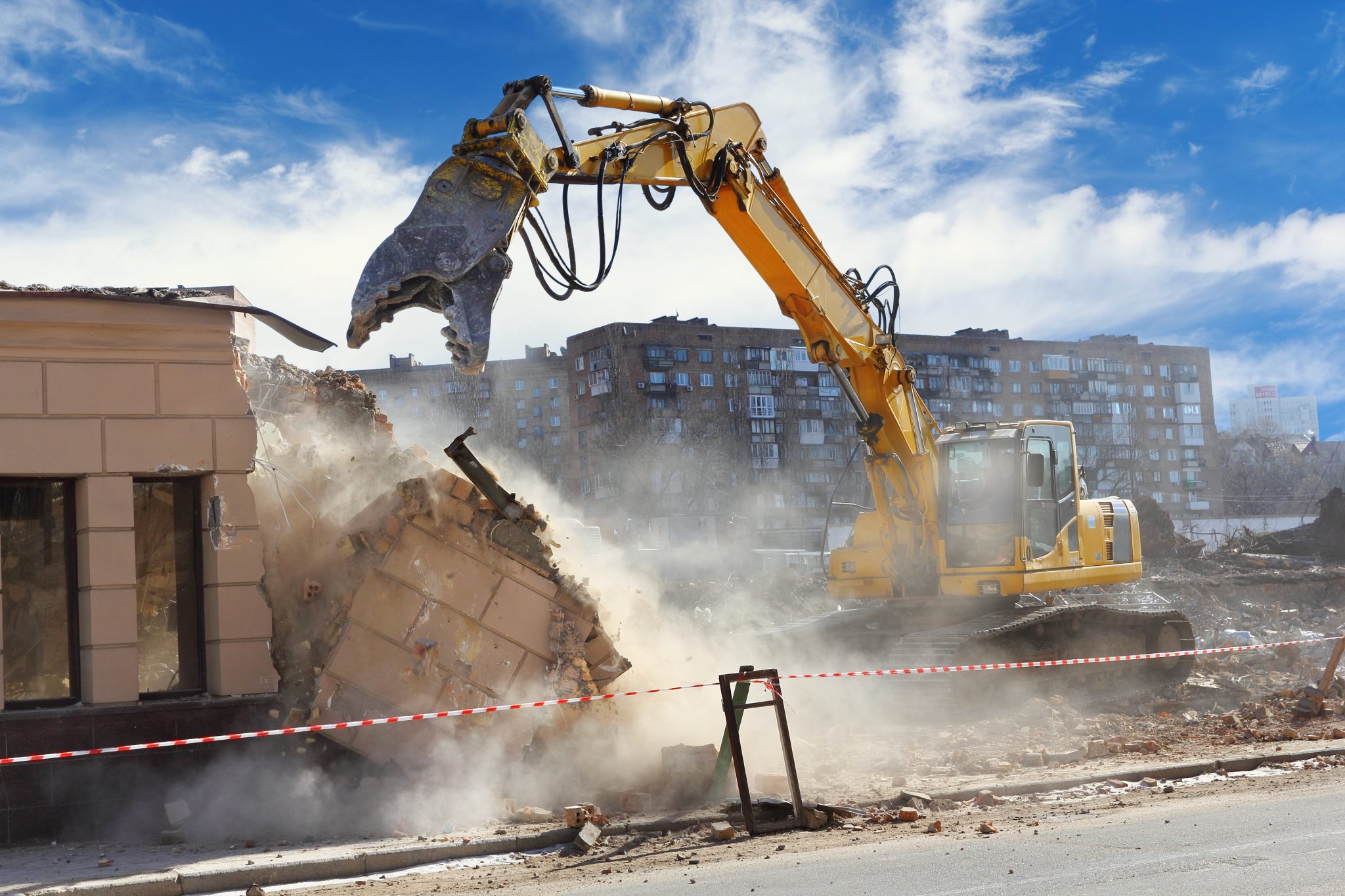Have you ever lived or worked near a large demolition project? Do you see the dust hovering in the air, maybe over your home or business or your car as you drive by and think “well, they’re tearing the building down, it’s just part of what happens”? Do you see the dirt and dust all over the roads entering and leaving the demolition site and just count it as “part of the process”?
I used to just think it came with the territory of tearing down and building new: just part of the process. But I’ve watched my beloved childhood mall being torn down the past couple of months. I noticed daily all of the excessive dust collecting in the air and on the roads. Other than wondering where on Earth Jingles the Christmas Bear ended up, I also wondered what, if anything, could be done to minimize all the dust being generated.
First, let’s quickly hit a few high points on what is called “fugitive dust.” By definition, “fugitive dust” is solid air-borne particulate matter emitted from any source other than a flue or stack.[1] Basically, this is dust that leaves the lot line of any activity that generates the dust. Demolition of buildings, and construction of buildings, can create dust, which can also leave the lot line and travel onto neighboring roads and properties and collect in the ambient air.
At the most basic level, the dust generated is particulate matter: both small (PM2.5) and large (PM10). Health studies have shown a significant association between exposure to particle pollution and health risks, including premature death. Health effects may include cardiovascular effects such as cardiac arrhythmias and heart attacks, and respiratory effects such as asthma attacks and bronchitis.[2]
Depending on how the building is being demolished (i.e. through implosions, wrecking ball etc), when it was constructed (generally, buildings built after the 1970’s generally will not contain asbestos), whether lead (or other heavy metals) is present and other factors can affect the constituents of the dust, which can create additional health and environmental issues outside of the particulate matter itself.
If you’re now having that aha moment of “wait, this isn’t just some dust flying around and part of the process,” and you’re wondering how the dust can be minimized, I have good news! In Jefferson County, the Health Department (our regulatory authority for air) regulates fugitive dust from demolition sites. Below are their rules:[3]
6.2: No person shall cause, suffer, allow, or permit any materials to be handled, transported, or stored; or a building, its appurtenances, or a road to be used, constructed, altered, repaired or demolished without taking reasonable precautions to prevent particulate matter from becoming airborne. Such reasonable precautions shall include, but not be limited to, the following:
6.2.1(a) Use, where possible, of water or chemicals for control of dust in the demolition of existing buildings or structures, construction operations, the grading of roads or the clearing of land;
6.2.1(b) Application of asphalt, oil, water, or suitable chemicals on dirt roads, materials stock piles, and other surfaces which create airborne dust problems; and
6.2.1(c) Installation and use of hoods, fans, and fabric filters (or other suitable control devices) to enclose and vent the handling of dust materials. Adequate containment methods shall be employed during sandblasting or other similar operations.
6.2.2: Visible Emissions Restrictions Beyond Lot Line. No person shall cause or permit the discharge of visible fugitive dust emissions beyond the lot line of the property on which the emissions originate.
6.2.3: When dust, fumes, gases, mist, odorous matter, vapors, or any combination thereof escape from a building or equipment in such a manner and amount as to cause a nuisance or to violate any rule or regulation, the Health Officer may order that the building or equipment in which processing, handling and storage are done be tightly closed and ventilated in such a way that all air and gases and air or gas-borne material leaving the building or equipment are treated by removal or destruction of air contaminants before discharge to the open air. (emphasis added).
So there are rules that require measures to be taken to minimize the dust that leaves the lot line of a demolition site. The Jefferson County Health Department (and ADEM) can enforce these rules by citing the person with a violation. They can also enforce by requiring the person generating the fugitive dust to take the measures (namely wet suppression) to minimize the dust being generated.
So now that you know dust from a demolition site isn’t just something you have to deal with, what do you do? First, if you’re in Jefferson County, call 205-930-1276 and everywhere else (except Huntsville, where you call ), call ADEM at 334-271-7861 and let them know about the problem.
When you alert the state agency, be sure to point to their rules about fugitive dust and how those are being violated and let the state agency know how you want them to respond (cite a violation, require dust management and/or perform air monitoring).
Please also let us at GASP know about the issue so we can help you make sure it is addressed.
Another thing you can do is let your neighbors, neighborhood officers, City Council persons and business owners near you and the demolition site know that the dust isn’t just part of the process you have to deal with. Let them know there are rules that have to be followed, state agencies that enforce them and things that can be done to minimize the dust (that honestly are not even that hard to do).
[1] Jefferson County Board of Health Air Pollution Control Rules and Regulations 1.3 available athttps://www.jcdh.org/SitePages/Misc/PdfViewer?AdminUploadId=448
[2] https://www3.epa.gov/region1/airquality/pm-human-health.html#:~:text=Health%20studies%20have%20shown%20a,as%20asthma%20attacks%20and%20bronchitis.
[3] Jefferson County Board of Health Air Pollution Control Rules and Regulations 6.2. Outside of Jefferson County, the Alabama Department of Environmental Management also regulates fugitive dust. You can see their rules at 335-3-4-.02, available at http://adem.alabama.gov/alEnviroReglaws/files/Division3.pdf.


